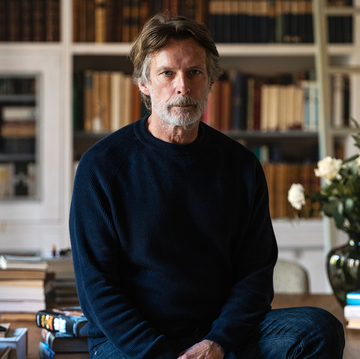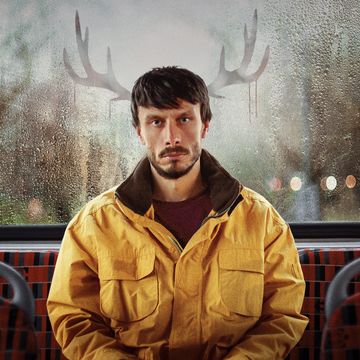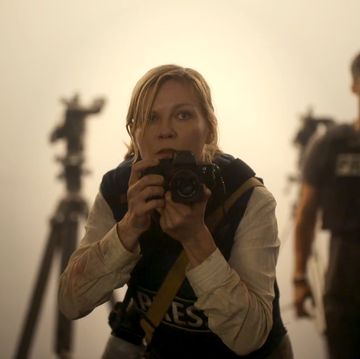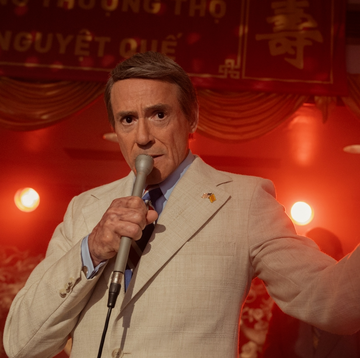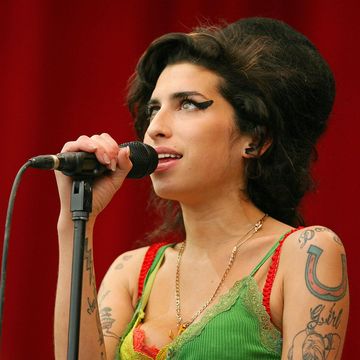It's 6am on the fifth day of San Fermin and the July air is unseasonably cold. Drunken bodies litter the dawn streets, silent in their sangria and bravado-fuelled comas. I count each step; trudging ever closer to what I am certain will be a bloody and pointless death.
I try and recall the moment when I decided that sprinting through narrow streets, alongside six, prime Spanish fighting bulls - with 2,000 other people for company - would be an appealing holiday activity.
It evades me.
An eight-day carnival held in the Basque city of Pamplona every July, San Fermin is officially meant to honour a Catholic saint (the Spanish do love a saint), but its place in the bucket list zeitgeist was really set by Ernest Hemmingway and his seminal novel The Sun Also Rises.
Nearly 100 years on from its publication, the event now sees tens of thousands descend on the city to drink, dance, watch bullfights – known as corridas – and most famously, run with the bulls themselves.
Nervous chatter begins to reverberate through the alleys and plazas as I inch closer to the square, the official starting point for the daily encierro, or bull run to us gringos.
Said to have begun as a way of encouraging bulls from the fields to market - and then later on as a way of getting them to the bull ring – angry cows have been chasing men throughout Spain, France and Portugal since at least the 14th century.
At exactly 8am for seven days of the festival, six fighting bulls are flanked by six oxen and released onto the cobble, to chase around 2,000 people for 825 metres, up the winding old town and into the city's bullring, where they will later take centre stage as the doomed stars of the evening bullfight.
The bars are only just kicking out from the night before as I weave between hordes of bleary-eyed revellers, either staggering home or – most worryingly – staggering towards the start of the run.
By seven my heart is somewhere in my mouth. I'd read that people were regularly sick from nerves before a run, I'd also read about a 25 year Pamplona veteran who had called the opening run of this year's festival the craziest he had ever seen. Two Australians and an Englishman were gored that day, with scores of others hospitalised after being crushed and trampled by the human swarm.
I focus on deep breaths.
The police form a barrier by the city hall to prevent any other would-be runners from joining, and so begins a tense 60 minute wait for the 8am klaxon - the signal that the bulls have been released from their corral and the run is to be run.
I set my attention on a group of swallows high above; as they flit and dance, erratic and ignorant through the now clear morning sky.
Since records began in 1925, 15 people have been killed and thousands injured in Pamplona - the most recent death being that of 27 year-old Daniel Jimeno Romero, who was gored in the chest in 2009. (In 2015, ten others were killed at other similar, smaller festivals around Spain, including a 16 year-old boy).
The police finally relax their cordon and allow the runners to disperse through the street and pick their starting position. The most experienced, 'Los Divinos' – a skilled band of locals who can manipulate the bulls like urban matadors – choose to be as close to the start as possible. I decide my luck is best tried further up the course.
Hundreds of eager faces peer down from the crumbling apartment balconies that hang theatrically above the course. I wonder how scared we all look.
7:57am…
7:58am…
7:59am…
Eight.
The klaxon sounds, echoing clear and dreadful. Heads snap round, wide-eyed and disbelieving, but there's no sign of the anticipated crush, just a lot of weak-kneed jogging and cursory glances over shoulders.
And then I hear it.
What was a relatively empty street seconds before is now awash with a horde in complete survival mode, doing anything to avoid the imminent black wave of half ton bulls rushing up from behind. Screams cascade from the watchers above, safe on their balconies, drunk on schadenfreude and morning sangria.
I launch myself against the cold stone of a building, my heart a Kalashnikov as a whirl of black thunders past, sucking the oxygen from the alleyway as men start to scramble away and trip on the slick cobblestones ahead.
Down to the final corner and the bullring's entrance, the last and most perilous stage of the course. Only three metres wide, runners regularly fall at this point causing pile-ups which are only cleared when a bull hurtles through to scatter bodies like broken bowling pins.
Staggering into the ring – obstacle free - I notice that every seat in the battered colosseum is taken but clamber over a chipped green panel to safety.
Soon the bulls arrive, pausing momentarily to acknowledge the crowd. Their midnight eyes dart upwards, shimmering in the summer light, before being swiftly ushered out of sight until the evening's corrida.
I close my eyes and let my heart slow down, anxiety steadily giving way to relief, the primal - OK, fucking stupid - mayhem of the morning's events already evaporating in the heat of a Basque July.






